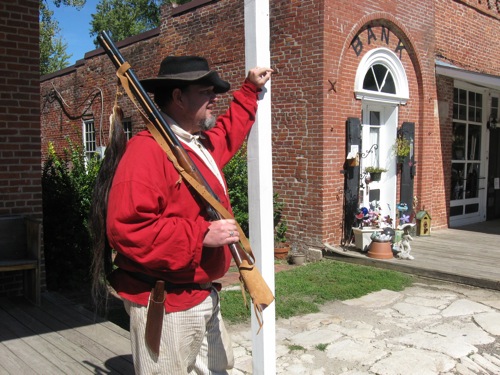
Courtesy Friends of Arrow Rock
In places throughout the Grand Central region you can find traces of the brave pioneers who opened the American West. You simply need to know where to look.
Trails are an integral part of the American story, and Arkansas, Missouri, Oklahoma and Kansas are repositories of the country’s migratory history. During the 18th century, famous routes such as the Oregon, California and Santa Fe trails began in the region and led thousands of adventurous travelers toward new lives in the West. Other trails led from north to south, bringing their own contributions to the economic growth of the area.
Today, of course, many of the original trails have been covered over by modern cities, towns and roads. But they are not gone entirely: At parks, heritage centers and other areas in the Grand Central states, visitors can find evidence of those historic trails and learn some of the inspiring stories they represent.
Next time you take a group to tour this part of the country, consider visiting one of the following trail sites to discover some fascinating remnants of America’s pioneering past.
Arrow Rock, Missouri
With a year-round population of just over 50 people, Arrow Rock, Missouri, seems like a very small town. But the area played a big part in westward expansion in the 1800s.
“We were right on the Missouri River, so people that traveled the river westward came through here,” said Kathy Borgman, executive director of Friends of Arrow Rock. “But if you were going west on the land trails, you would come cross the river here. We were a ferry crossing for more than 100 years.”
Arrow Rock’s location made it a key place on the Santa Fe Trail. The first explorers who went west toward Santa Fe to trade with Indians met at the Arrow Rock river crossing in 1821. Soon the town became a major jumping-off point and supply depot for the thousands of families that traveled the trail to find new fortunes in New Mexico.
Today, Arrow Rock bustles with tourists instead of pioneers. The entire town is protected as a national historic landmark, and groups that visit can tour a historic courthouse, a stone jail and other buildings that sprang up as the town grew during the heyday of the Santa Fe Trail. The best-known building is the Huston Tavern, an 1834 Federal-style structure restored by the state park system in 1923. A number of other small storefronts in the eight-block town date back as far as 1901.
Groups that visit Arrow Rock often spend time shopping, eating and attending the professional theater performances that take place there on summer evenings.
“You can walk around, spend the day here and visit with the shopkeepers,” Borgman said. “We hear a lot of people calling it genuine and authentic. It’s a town, not just a museum. But everything is very well preserved.”
Chisholm Trail
Heritage Center
Duncan, Oklahoma
The Chisholm Trail may not have garnered the kind of national attention that the Santa Fe Trail has, but it played an important part in the development of industries in Kansas, Oklahoma and Texas. At the Chisholm Trail Center in Duncan, Oklahoma, groups can learn more about the trail’s role in cowboy history.
“After the Civil War, the cattlemen didn’t have many markets down in Texas, so a man came up with the idea of putting cattle pens in Abilene, Kansas,” said Stacy Cramer Moore, the center’s executive director. “If they could get the cattle to Abilene, they could load them on railroad cars and send them back East. It took the cowboys about 100 days to make the trip.”
The route the cattle drives followed came to be known as the Chisholm Trail, and it helped to speed the settlement of Oklahoma. The Chisholm Trail Heritage Center tells the story of the entrepreneurs, freed slaves, American Indians and Mexican “vaqueros” that worked on the trail and gives visitors a sense of what this adventurous life was like.
“We have a 4-D theater with a 20-minute film that depicts a young man’s first cattle drive,” Moore said. “You can smell the prairie and feel the stampede. We also have a full-scale diorama of what the ecosystem would have looked like in that time, with wolves, coyotes and that sort of thing.”
The center also has traditional museum exhibits that focus on subjects such as Native American groups living in the area and the weapons used by cowboys and Indians along the trail. Western art lovers will find a $2 million gallery with pieces by artists such as Charles Russell and Frederic Remington, as well as the large bronze sculpture “Beyond the Chisholm Trail.”












